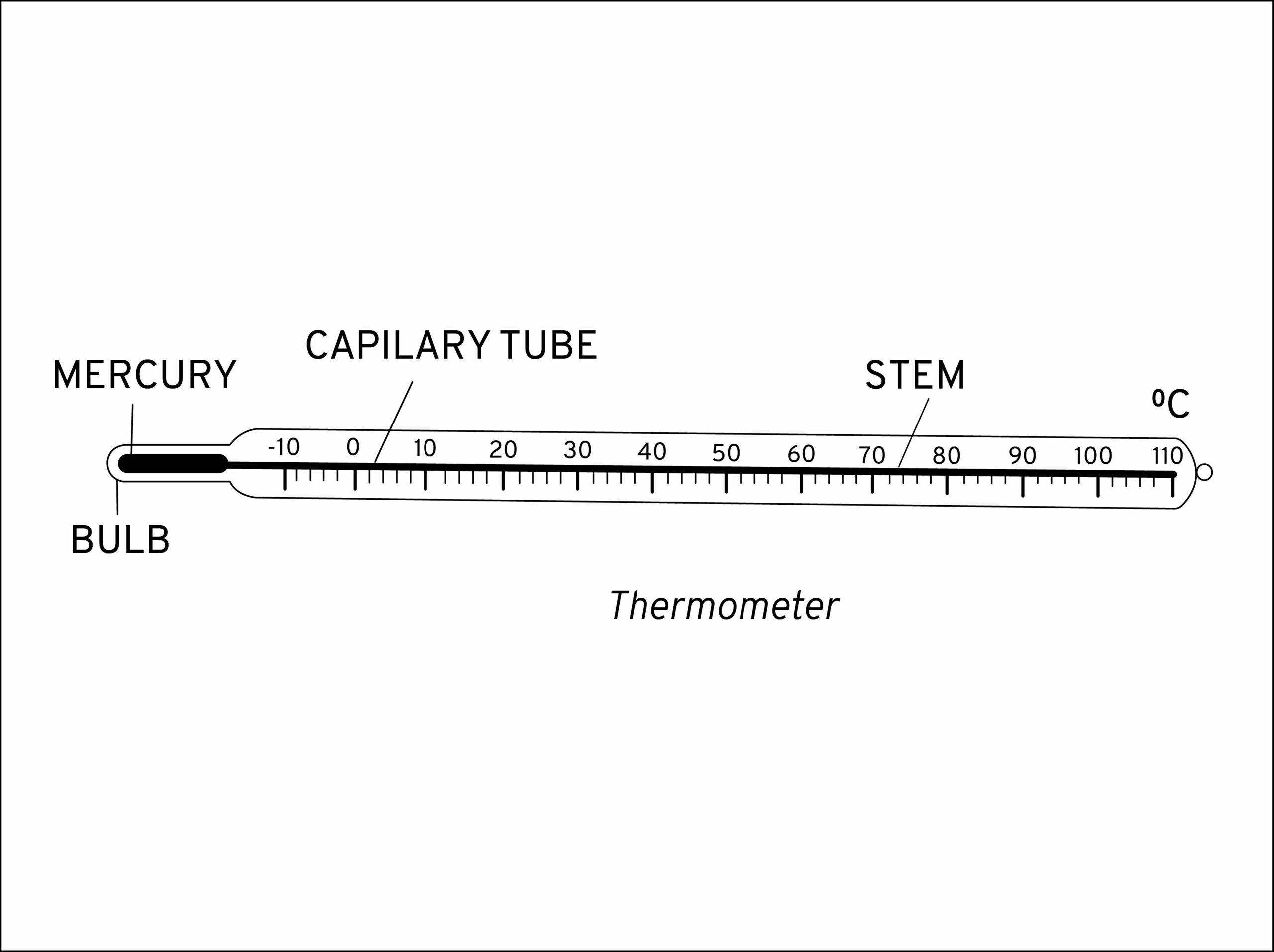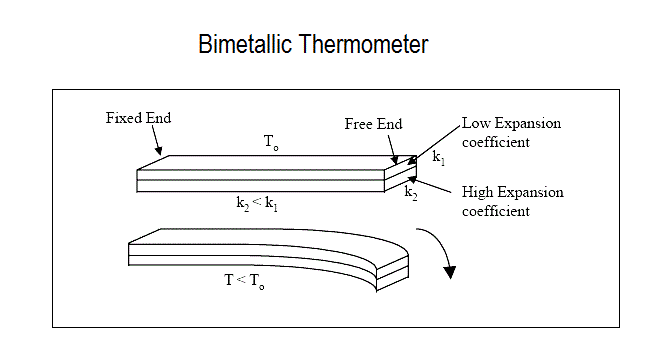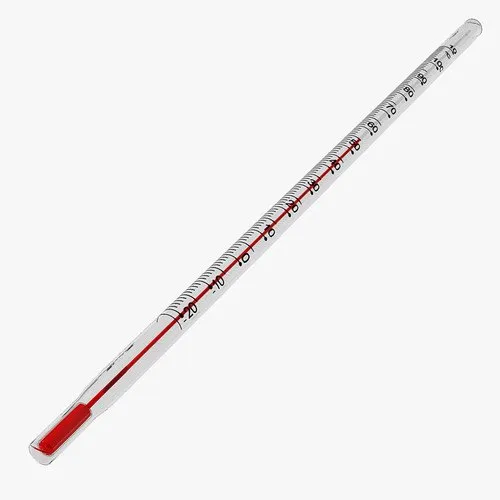What is laboratory thermometer- Using a thermometer, we can measure temperature. Thermos describes hot, and metron refers to measure. There is often confusion between temperature and heat among people. For instance, how would you describe the hotness of an item? What is the basis or measure of that hotness? To answer that question, we need to look at temperature. An energy unit called Joules measures heat as a form of energy. Temperature is a measure of heat. Heat causes the temperature to rise. Therefore, if there is more heat, then the temperature is higher as well.
How do we find the information about temperature? An object’s temperature can be measured with a device known as a thermometer.
To get a broader perspective on laboratory thermometers, Linquip provides an abundance of information. By using thermometers, you can accomplish your tasks quickly and efficiently. See our “Tools and Instruments” page for more information about Linquip’s solutions.
You may find it difficult to choose the right thermometer model with so many models available. With Linquip, you can choose Tools and Instruments Products from a variety of options. You can also receive quotes from multiple Suppliers and Companies in the Tools and Instruments industry through Linquip’s platform.
The Laboratory Thermometer is a device used to measure temperatures and, in particular, measures temperatures considerably higher and lower compared to those of the human body.
Basics of Laboratory Thermometers
Laboratory thermometers are designed to measure boiling points, freezing points, and temperatures of various substances. In this case, it has a temperature range of -10 degrees C to 110 degrees C. As such, it can be used to measure temperature changes accurately.
Having a long stem and a silver bulb at the end, it has a distinctive appearance. You can submerge it partially or completely in a liquid. Usually, they are made from metal or glass and are strengthened by thermal tempering or annealing.

Different types of laboratory thermometers work differently. The most common types of thermometers are:
- Liquid-in-glass thermometer
- Bimetallic strip thermometer
- Electronic thermistor thermometer
- Infrared (IR) thermometer.
Types of Laboratory Thermometers
The following types of laboratory thermometers are in common use:
Liquid-In-Glass
Liquid-in-glass thermometers consist of sealed glass and a fluid, most commonly mercury or red alcohol, whose volume changes when the temperature changes. Temperature is indicated by the rising liquid in the tube as it expands with rising temperature. Consider several factors when selecting a liquid-filled thermometer, including the following: Gas or liquid in the tube; Glass or metal tube; Amount of liquid or gas in the tube.
These thermometers belong to the category of laboratory glassware. The thermometer is one of the easiest and most common types of temperature measurement devices and is considered the best available on the market. It gives fairly accurate results between -200°C and 600°C.
Benefits
Liquid-in-glass thermometers offer the following main benefits:
- A cheaper alternative to other temperature-measuring devices
- Easily accessible and convenient to use
- No power supply or batteries are required for charging
- A mercury thermometer provides accurate readings and can be used under the arm, rectally, or orally to determine temperatures.
Bimetallic Strip
It consists of two metal strips bonded together, each of which expands differently as it warms. As the two metals expand at different rates, the bimetallic strip bends or curls towards the side with the lower thermal expansion coefficient. A pointer is deflected over a calibrated scale by the movement of the strip, which then indicates the temperature to the user. It is common to wind long bimetallic strips into coils and use them with dials.

Benefits
Among the advantages of this device are its low cost, toughness, ease of use and installation, and accuracy over a wide temperature range.
There are several disadvantages of this type of thermometer: they are only available in indicating types, calibration may change due to use or environment, and accuracy is not as good as glass stem thermometers.
Electronic Devices
Thermistors are electronic devices that measure electrical resistance changes and translate them into changes in temperature.
In thermistors, sensitive resistors are used to measure temperature because they provide a precise and cost-effective way to do so. Thermistors serve as temperature sensors. A fire alarm, oven, and refrigerator are examples of common appliances that use them. In addition, they are used to measure temperature in a variety of automotive applications, as well as in digital thermometers.
Benefits
Thermistor thermometers have the following advantages:
- Easily miniaturized
- A rugged design
- A quick response time
- Simple to use
- Affordability
Infrared Thermometers
A non-contact infrared thermometer converts infrared (IR) energy into an electrical signal than can be interpreted as a temperature measurement.
Temperature can be measured from a distance with an infrared thermometer since it uses the thermal radiation produced by things to measure it. An infrared thermometer measures the surface temperature in a fast, non-contact manner. With dynamic processes or difficult-to-access locations, this can be a simple method for measuring temperature. IR thermometers work by focusing infrared (IR) energy onto a detector, which transforms the energy into a temperature signal.

Benefits
There are several benefits to using an infrared thermometer:
- Suitable for a wide variety of applications
- Features such as memory and advanced measurement capabilities
- The measurement of moving parts is also possible
- Easily portable, lightweight, and convenient
Display Options
Display options for thermometers are two-fold:
- Fahrenheit (F)
- Celsius (C)
The accuracy of each type of device can be determined by graduated scalar divisions or test points. In most cases, the thermometer’s housing is etched or printed with display numbers. It is often possible to improve the readability of graduations by using permanent pigmentation.
Features
Other features may make thermometers easier to use and more reliable.
Clip-On Magnifiers
Users can read numbers on a more detailed scale with clip-on magnifiers.
Immersion
During testing, full immersion thermometers can be left directly into the substance. On the other hand, in some other thermometers, it is necessary to hold or suspend partial immersion thermometers over the substance if you want to get an accurate reading.
Sheath Material
Monitoring acids or hazardous materials is easily achieved with polytetrafluoroethylene (PTFE).
Protective Metal Sheath
A no-roll cap prevents the thermometer from rolling. Additionally, many thermometers come with a hook that can be hung over the material being measured.
Applications
Researchers and scientists use laboratory thermometers to monitor experiments, maintain a sterile work environment, calibrate other laboratory instruments, and test materials.
Calibration
The American Society of Testing and Materials (ASTM) and the National Institute of Standards and Technology (NIST) calibrate laboratory thermometers. The National Institute of Standards and Technology calibrates laboratory thermometers spanning the temperature range of -196°C to 550°C.
Download PDF for Laboratory Thermometer
This article is also available in PDF format, which you can download for future reference by clicking on the link below.
linquip.com-What Is Laboratory Thermometer
Buy Equipment or Ask for a Service
By using Linquip RFQ Service, you can expect to receive quotations from various suppliers across multiple industries and regions.
Click Here to Request a Quotation From Suppliers and Service Providers
Read More on Linquip
Buy Equipment or Ask for a Service
By using Linquip RFQ Service, you can expect to receive quotations from various suppliers across multiple industries and regions.
Click Here to Request a Quotation From Suppliers and Service Providers
Read More on Linquip
- Types of Thermometers: All You Need to Know
- What Is Laboratory Thermometer? + Types & Applications
- Types of Thermometers: All You Need to Know
- A Brief Look at Types of Multimeters
- The Complete Library Of Types Of Anemometer
- The 9 Best Infrared Thermometers
- 13 Types of Tachometers With Their Functions & Advantages



